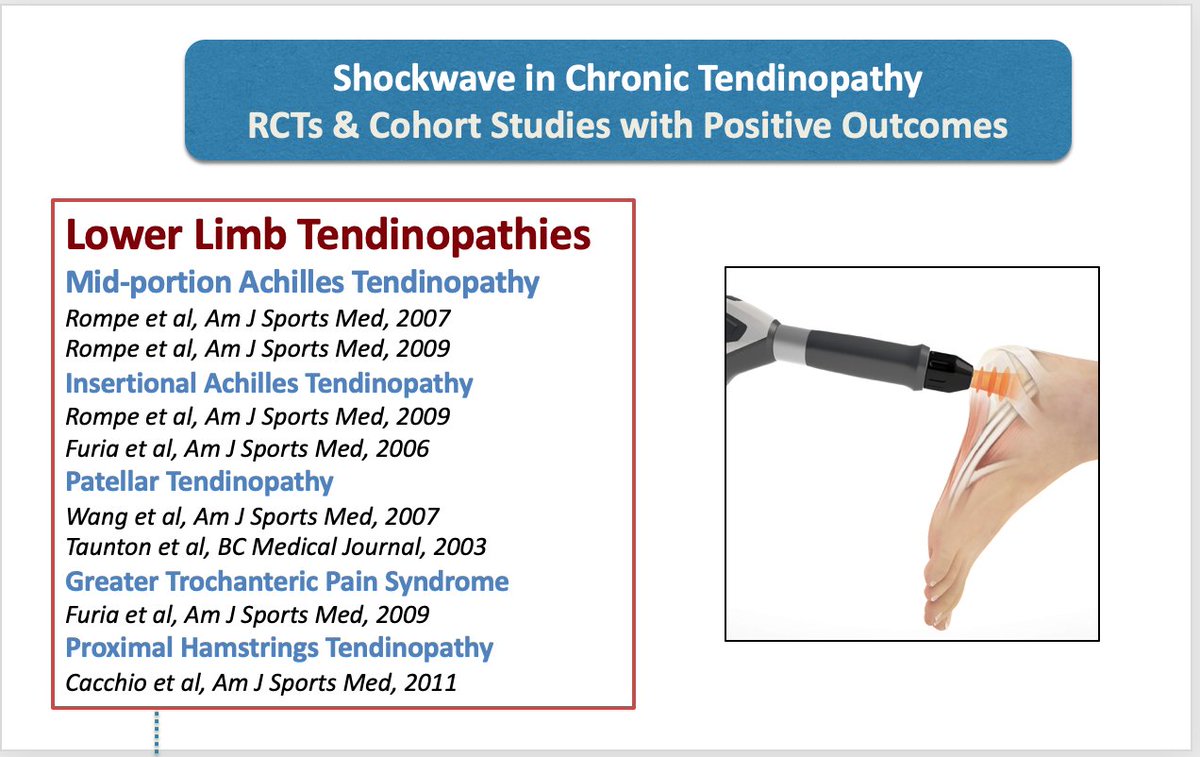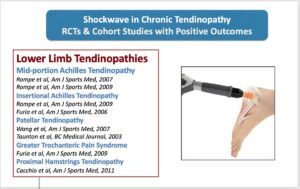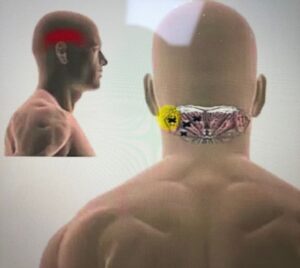Shockwave Therapy is application of high-energy sound waves, through a medium such as water or coupling gel, to human tissues (Chung & Wiley, 2002).
It was orginally used for the treatment of renal stones. Recently, it has been shown to an effective intervention in lower limb tendinopathies such as greater trochanter pain syndrome, patellar tendinopathy and achilles tendinopathy, when other non-operative treatments have failed (Mani-Babu et al, 2015).
Fig 1. Showing the research behind the effectiveness of Shockwave therapy for tendon related pain.
Shockwave Therapy has been shown to create an inflammatory response, decrease the number of sensory free nerve endings, enhance angiogenesis and trigger the endogenous pain control system (d’Agostino et al, 2015). It has been hypothesized that stimulation by ESWT could increase the mitogenic response of tendon (Chen et al, 2004) and increase expression of lubrycin (Zhang et al, 2011).
It has cleared by National Institute for Health and Care Excellence (NICE) for clinical use in the UK for chronic tendon pain, as there are no major safety concerns (see https://www.nice.org.uk/guidance/ipg571/ifp/chapter/What-has-NICE-said)
A large systematic review of 106 articles has shown that ESWT is an effective and safe non-invasive treatment option for chronic tendon disorders (Schmitz et al, 2015). There were no reports of serious adverse events in any of the studies included in the review.
In conlusion, Shockwave therapy is a useful treatment tool for chronic tendon pain and avoidance of surgical intervention.
References:
- https://www.running-physio.com/achilles-options/
- Chung, B. and Wiley, J.P., 2002. Extracorporeal shockwave therapy. Sports medicine, 32(13), pp.851-865.
- Mani-Babu, S., Morrissey, D., Waugh, C., Screen, H. and Barton, C., 2015. The effectiveness of extracorporeal shock wave therapy in lower limb tendinopathy: a systematic review. The American journal of sports medicine, 43(3), pp.752-761.
- d’Agostino, M.C., Craig, K., Tibalt, E. and Respizzi, S., 2015. Shock wave as biological therapeutic tool: from mechanical stimulation to recovery and healing, through mechanotransduction. International journal of surgery, 24, pp.147-153.
- Chen, Y.J., Wang, C.J., Yang, K.D., Kuo, Y.R., Huang, H.C., Huang, Y.T., Sun, Y.C. and Wang, F.S., 2004. Extracorporeal shock waves promote healing of collagenase‐induced Achilles tendinitis and increase TGF‐β1 and IGF‐I expression. Journal of Orthopaedic Research, 22(4), pp.854-861.
- Zhang, D., Kearney, C.J., Cheriyan, T., Schmid, T.M. and Spector, M., 2011. Extracorporeal shockwave-induced expression of lubricin in tendons and septa. Cell and tissue research, 346(2), pp.255-262.
- Schmitz, C., Császár, N.B., Milz, S., Schieker, M., Maffulli, N., Rompe, J.D. and Furia, J.P., 2015. Efficacy and safety of extracorporeal shock wave therapy for orthopedic conditions: a systematic review on studies listed in the PEDro database. British medical bulletin, 116(1), p.115.
- https://www.nice.org.uk/guidance/ipg571/ifp/chapter/What-has-NICE-said






